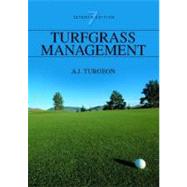
| Introduction | |
| Growth and Development | |
| Turfgrass Species | |
| The Turfgrass Environment | |
| Primary Cultural Practices | |
| Supplementary Cultural Practices | |
| Pest Management | |
| Propagation | |
| Cultural Systems | |
| References | |
| Glossary | |
| Conversion Tables | |
| Calibration | |
| Common and Chemical Names of Pesticides Used in Turf<$$$> | |
| Table of Contents provided by Publisher. All Rights Reserved. |
The New copy of this book will include any supplemental materials advertised. Please check the title of the book to determine if it should include any access cards, study guides, lab manuals, CDs, etc.
The Used, Rental and eBook copies of this book are not guaranteed to include any supplemental materials. Typically, only the book itself is included. This is true even if the title states it includes any access cards, study guides, lab manuals, CDs, etc.